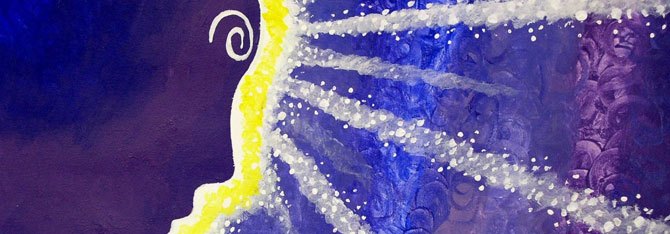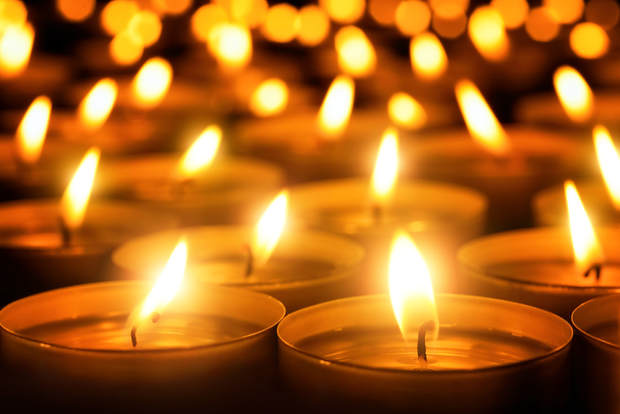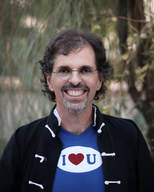|
This week, we are experiencing the shortest days of the year, when darkness abounds and daylight is most scarce. Yet, all of our winter holidays focus on light. Why is that? One reason may be that in the absence of sunlight, we have no choice but to turn inward and find a different light source.
The Jewish holiday of Hanukkah, also known as the Festival of Lights, commemorates an extraordinary event that took place in Palestine two centuries before the birth of Jesus. Although there was only enough oil to keep the temple lights burning for a single night, those lights remained illuminated for eight nights. How was that possible? For the Jewish people, there is only one answer: The light that appeared in their temple did not emanate from the burning of oil but from an altogether different source. Those who witnessed the miracle understood that they were seeing a divine light, and there is only one such light. It is called love! For eight nights, the temple was illuminated by the same love that fills a parent’s heart and inspires every creative pursuit. This same light is at the heart of Christmas, which celebrates the birth of the ultimate messenger of love. The arrival of Jesus represents the advent of an important new era in human history. Ironically, that era has yet to be realized fully, even after two millennia. An Age of Love is waiting to be born on this planet. And what exactly is the delay? The answer is: You and I. Until we internalize the most important spiritual teaching that has ever been given, we remain on the brink of a crucial step in the evolution of our species. Jesus said, “The Kingdom of God is within you.” The source and essence of all things, including the light of love, abides in our own hearts. And how do we tap into that source? When asked to name the most important commandment, Jesus replied, “Love the Lord your God with all your heart and with all your soul and with all your mind and with all your strength.” Then he added a second commandment, which he considered equally important: ‘Love your neighbor as yourself.” To love God is to love one another, and vice versa. That is because the Kingdom of God is in you as in me as in all things. Nobody needs to earn our love. The love that Jesus describes is unconditional, which means that we give and receive it freely, regardless of what the beloved says, does, or thinks. Every person we encounter merits our love for one very simple reason: They are an embodiment of the Creator. The moment we grasp this teaching fully, we change the world in the most powerful and irreversible way imaginable. War, poverty, and injustice vanish overnight. Do I believe that such a revolution is possible? With all my heart, I do! And is it inevitable? That depends entirely on us. So, in this beautiful holiday season, you and I can usher in an Age of Love on this Earth. That is my holiday wish for all of us. May the light of love fill our hearts, now and always. Many blessings and happy holidays!
0 Comments
 When it comes to intuition, you have probably heard this advice before: Trust your gut. But how you can be sure that your gut is trustworthy? Intuition has been described as a “still, small voice.” What does that voice sound like? How do you recognize it? Can you be sure, when you are tuning into that voice, that you have been able to identify a true signal and not just noise? Like it or not, we have multiple voices inside our heads. You may think that only insane people “hear voices.” But psychological research has shown that all of us have an inner dialogue unfolding throughout the course of our day. And that dialogue includes the internalized views and positions of those around us: spouses, parents, friends, teachers, coworkers, and the media. There may be different voices reminding us of right and wrong, legal and illegal, safe and unsafe. Some of us may experience the voice of shame or guilt. But intuition stands out from all the rest. This voice—or set of voices—takes us higher, lifts our spirits, and leads us in the direction of our greatest inspiration and fulfillment. The messages delivered by your intuition do not have to be verbal. They may come in the form of a feeling, dream, or meaningful event. For some people, an encounter with nature—wildlife, celestial events, extreme weather, or birdsongs—may carry special significance. The built-in guidance system we call intuition can provide important clues pertaining to various aspects of our lives: creativity, relationships, career moves, and other major life decisions. My own intuition guides me in such powerfully compelling ways that whenever I reach a crossroads, I make myself as receptive as possible and wait for clarity to come. It always does. Yet I have also seen many examples of intuition gone awry. In my research on mothers’ intuition, I found that strong preferences can override intuition. There is a big difference between what your intuition directs you to do and what you want to do. On several occasions, I was guided intuitively to go in a direction that I was reluctant to follow—at least initially. Besides your desires and preferences, you can also experience different types of interference with your intuitive guidance. It could be random noise or even a form of self-sabotage. What if an imposter were to pass itself off as the voice of intuition? As implausible as that scenario may seem, I have encountered it both in my own experience and in working with others. There is a simple way to prevent interference of this kind: Just demand that it not happen. In both The Chanter’s Guide (pp. 86-89) and The Way of Play (pp. 136-140), I discuss the three demands that I utter every morning upon awakening. These demands are intended to clear the lines of communication with my intuitive guidance, and I know with certainty that they work. For anyone who is interested in being more intuitive, this is the place to start. If you do not have a clean signal from the source of your intuition, then you should not even think about “trusting your gut” because the guidance you will be receiving will not be reliable. It’s a simple matter of: garbage in, garbage out. I consider the demands I make each morning to be among the most things I do on a daily basis. As someone whose creativity and life choices depend so much on intuition, I must be able to differentiate the signal from the noise. Intuition can be one of the most powerful tools at our disposal but as with any other tool, it has a learning curve. A tool is only useful in the hands of someone who has at least a modest level of mastery. With respect to intuition, it all starts by establishing clear lines of communication free of any interference.
Last Wednesday, I had the rare privilege of being interviewed for nearly two hours on Freedom Radio UK. Host Andy Peacher and I talked about freedom from a spiritual perspective, allowing us to address a wide range of topics related to creativity, personal power, healing, and self-transcendence—not to mention Repose. To be able to cover so much ground in a single interview seems like an extraordinary luxury. In fact, I may never have this chance again, which is why I want to offer the following overview of the interview audio file, which you can access by clicking on the Play button above. Each section is identified by a time marker (in minutes and seconds) so that you can fast forward to the sections and topics that will be of most interest to you. I hope you enjoy, and please feel free to let me know if any segment of the interview stood out for you or was of particular benefit.
7:18- DEEP CREATIVITY: How does Deep Creativity differ from older views of creativity? It places emphasis on the creative experience itself, which is extremely powerful. The genius of the artist is to capture the essence of that experience so that it can be shared with others. 17:00- TO BE A MAN: In a recent blog post, I addressed the question of what it means to be a man. This is a particularly timely question now with sexual assault and harassment being in the daily news, and with the advent of the “Me Too” movement. Here, I talk about the Jewish notion of a mensch, or righteous man, and what that entails. 22:10- POWER: Old models of power involving domination and greed are being replaced by a different one that focuses on power over oneself, and most importantly, on the power to experience the here and now. This kind of power requires us to be fully present, fully aware in this moment. When we rush, we miss out on this most important element of life. And love is at the heart of this power because it brings us into the moment. 27:40- JESUS AND LOVE: I speak about unconditional love and the contribution of Jesus to our understanding of it. The reason we must love each other as ourselves, in the way that Jesus urged us to do, is that the Kingdom of Heaven is in every one of us. We are all made up of the same stuff: consciousness, form, and energy. Loving one another unconditionally has the power to liberate us and to transform our world. Too many Christians are missing out on the key message of Jesus. I challenge the Tempe pastor who recently called for the killing of all gays by Christmas, pointing out that he is not a true follower of Christ and has missed the point entirely. Then I discuss the notion that our bodies are sacred space. When we are fully in our bodies, we tap into the extraordinary power that is at our disposal. 34:08- THE CREATOR WITHIN: The central insight of Deep Creativity is that there is only one Creator, one “experiencer” of the universe. To tap into our creativity, we need to learn to get out of the way of the dance of creation unfolding at each moment. It is time to see through the superficialities that have held back our understanding not just of creativity but of the human condition. Within our bodies, we find consciousness at every level. A spectacular show is happening in our bodies at this moment that we can hardly afford to miss. Separateness is an illusion, as is the notion of an objective reality. When we see beyond these illusions, we fall into an “I-Thou” relationship with everyone and everything. 42:25- THE FLOW OF LOVE: There are two creative forces in the universe: love and joy. In spite of our physical limitations, we have access to an abundant flow of love. Understanding our relationship to this flow and becoming a conduit for it is the key to healing, as I described in The Chanter’s Guide. It begins by learning how to empty ourselves so that we may immerse ourselves fully in the moment. 54:24- OBJECTIVITY: I speak about the myth of objectivity, which involves an artificial distinction between the inner and outer worlds. There is no way of knowing the world out there except through our thoughts and our five senses. Not recognizing the illusory nature of reality is a path to insanity—one that modern society is currently following in unproductive ways. 57:36- DEMONS: The most effective way to deal with our “demons” is to face them head-on. These demons are a mental construct. Just as we give them power, we can dissipate them in an instant. The key is to let go and be ready for the moment of insight in which we overcome grief and other forms of suffering. When we try to run away from our demons, we create much more suffering than when we face them directly. Healing ourselves of such suffering is a critical step in our own liberation, lightening our load greatly so that we can function more effectively in the world. 1:00:25- HEALING AND REDEMPTION: How do we heal the pain of trauma and abuse? I emphasize the idea that nobody is “damaged goods.” What we are at our core can never be damaged or tarnished; it is perfect, whole and beautiful. I also offer a radical new view of forgiveness as a tool for healing the karma of those who have transgressed upon us. To illustrate the point that nobody in this world is irredeemable, I share the story of the Tibetan Buddhist saint, Milarepa. Why do people act in ways that are angry, mean, and hateful towards one another? They are carrying out an old model of power, based on the notion that misery loves company. Instead of bringing others down, we all have the capacity to bring ourselves out of our own misery. Nobody can take this power and freedom away from us other than ourselves. Freedom builds from the inside out. I discuss what it means to be a free spirit, following one’s passion and not fitting into the mold. This leads to a discussion about the origins of Global Chant. The religions of the world have gone off the rails, and new models of spirituality are taking their place. These religions should be keeping us from hate, greed, and war. Yet they have done the contrary at times, missing the point of spirituality altogether, which is to live in love and recognize the sanctity of the moment. 1:10:24- THERAPY AND SELF-TRANSCENDENCE: The approaches to therapy that each of us chooses depends on our unique sensibilities. Whatever course we choose, the objective is to break free of the mental loops created by the process of rumination. This involves self-transcendence, which I point out is a crucial determinant of well-being. We can transcend ourselves in a number of ways, but one of the most powerful is to reach out to others—especially those who are suffering or in need. 1:19:05- EBFA. Human beings display a wide range of responses to adversity. The most effective ways are to rise above it, breaking free of the cycle of suffering. This entails immersing ourselves in the moment and the experience of being fully alive (EBFA). A near-death experience is a profound form of an EBFA. I point out that “near death” is often the same as “fully alive.” 1:25:30- REPOSE: I discuss Repose: what it is, how it works, and its profound physical and mental health benefits. Repose is distinct from meditation, mindfulness, or even traditional relaxation techniques. It is a remarkable tool that costs nothing to do, takes virtually no effort or training, and has extraordinary benefits. What would it be like to live in a world in Repose? 1:33:47- PAUSING TO NOURISH: I urge listeners to fill their toolbox with whatever tools they feel can make them stronger, including Repose. Anyone who tries Repose should give it at least 30 days to take effect. We have to learn to let go of the busyness of our minds. Repose is not just a technique but a state of mind. Everyone needs to take a pause from their mental activity. Media and technology are inadequate means of doing so. Television does not disengage the mind; in fact, TV viewing has been shown to reduce life satisfaction, probably through the effects of advertising that creates a sense of deficiency in viewers. Each of us can find ways to nourish our minds, bodies, and spirits. Currently, too many of us are malnourished in each of these areas. 1:41:52- OPENING UP: How do we open up our bodies? I compare Repose to other power poses that serve this function. To open our bodies and especially our hearts is not the same as being vulnerable. When we close ourselves off emotionally, we miss out on love, which is a tragedy. Energy and emotions are neither good nor bad inherently. We can transform any emotion into something powerful and positive. To use the energy of emotions constructively, first we have to learn to keep an open, positive relationship to these energies. Repose is one way to do that. Our research has shown that people in Repose feel relaxed and energized simultaneously, which is an extremely empowering experience. 1:49:29- RESOURCES: I close by discussing all the resources for personal liberation and empowerment that can be found on my website, http://www.victorshamas.com.  This past week, I came across a fascinating article by Will Burns (@WillOBurns) entitled, “The Creativity Gym Would be Designed to Expand Our Minds, Not Our Bodies.” Burns envisions a place where people can go to be creative—an idea that I absolutely love. His creativity gym consists of four distinct spaces: 1) a walking room; 2) a “prescriptive” bar; 3) a dimly lit room; and 4) a menial tasks room. Based on the tenets of Deep Creativity, I am going to offer a modified version of this space. First of all, it would be called a creativity playground as opposed to a gym. For one, a gym is not perceived universally as a place to experience the two emotions that I have shown to be at the heart of creativity: love and joy. A playground, on the other hand, has room for both. So, what exactly happens in this playground? The obvious answer is: play. But I want to be very clear about this notion because not all play is conducive to creativity. Educators like to talk about “purposeful play,” which is not one of my favorite terms. In The Way of Play, I describe forms of play that have no goal or destination. The idea is not to win a competition or solve a puzzle. Not that there is anything wrong with those forms of play. If the idea is to promote creativity, then the most conducive forms of play involve activities that we do purely for their own sake. The Way of Play lists 108 examples of such play, which include daydreaming, jumping, massage, listening or playing music, and riding on a swing. This play may involve physical activity, being in nature, interacting with another person or animal, free-form creative expression, or finding peace and quiet. One of the basic tenets of Deep Creativity is that creativity is not what we think. Scientists have a natural bias towards rationality and intellect, but the artists whom I have interviewed and studied confirm on a consistent basis that creativity is much more about feeling than thinking. Einstein himself said, “The intellect has little to do on the road to discovery.” Considering the source, we need to heed these words. For me, the most inspiring creative experiences are a full-body affair, engaging my five senses, my limbs and torso and face, and most importantly, my heart. If we really want to experience creativity fully, we must acknowledge the emotional and visceral components of that experience, including: passion, intuition, self-transcendence, imagination, and surrender. The dynamics of the creative experience involve two ends of a continuum: emptying and filling. When we empty our minds of all thought, we gain access to the true source of our creativity. Although formal meditation can be invaluable, my research has shown that play is at least as effective. In The Way of Play, I wrote, “Meditators dream of attaining the single-pointed focus that young children experience naturally when they play.” Filling, which is the other end of the continuum, involves total receptivity to all thought, without judgment or evaluation. Although mindfulness is conducive to that experience, Jhan Kold and I discovered in Repose a simple tool that promotes filling in a much more effortless manner. The beauty of Repose is that virtually anyone can do it with no special equipment or training. If you see a photograph of someone in Repose, you have everything you need to know in order to experience it for yourself. In order to create a space that is conducive to both emptying and filling, my creativity playground would include the following:
This idea is actually not new for me. In 2010, I established a non-profit called PlayHaven that was intended as this very type of venue, where adults can come to play and get inspired. Seven years later, PlayHaven is still in its infancy, but in the years ahead, I see it developing and blossoming. The creativity playground of the future is most definitely coming! |
I want to hear from you! Please share your questions and comments. And sign up for my newsletter, where I will pass along the insights, ideas, and inspiration that come my way.
Contact me:Archives
November 2023
|


 RSS Feed
RSS Feed
